5G Transformation Hub
Guangzhou 5G Smart Transportation City
How 5G can transform a city’s transportation system
Since year 2020, with the advent of 5G, the local transportation industry in Guangzhou, together with China Mobile and ZTE, have transformed the traditional transportation system into 5G-enabled smart transportation system.
Select a project
Contents
Challenge
Traffic pressures are increasing as Guangzhou's urbanization accelerates. Serious congestion, long waiting time, and lack of high-speed information services significantly affect the travel experience. Safety problems are serious, railway transportation and road accidents occur frequently. At the same time, operation efficiency and security monitoring are restricted by the existing network latency, bandwidth, and reliability technologies, and cannot meet the application scenarios of vehicle-road collaboration.
Solution
Through 5G technological innovation and in-depth cooperation with the transportation industry, we have built dedicated 5G networks and application systems in multiple fields such as subway, railway, bus, and road-bridge detection, including 5G native trains, 5G train-to-ground communication systems, 5G digital tunnels, 5G high-speed railway early warning systems, 5G under-train detection systems, 5G dispatch buses, etc.
Impact & Statistics
This project has not only benefited the 20 million population in Guangzhou, but also the entire transportation industry and government agencies, including subways, high-speed trains, and public buses, and are now enjoying more efficient operation and management, more automatic scheduling and maintenance, a more user-friendly and safe working environment and higher passenger satisfaction. These provide examples for digital transformation of city governance.
Wider Implications
The smart transportation industry is expected to grow dramatically over the next few years. The network atom capability, private network architecture, and cooperation mode in this project can be copied to taxis, train schedules, pulling, airports, ports, and other segmented transportation industries. The smart subway, high-speed rail, bus, and Internet of Vehicles cases in this project have also been widely replicated in other cities in China.
Stakeholders
Guangzhou Municipal Transportation Bureau, Guangzhou Metro, China Railway Guangzhou Group, China Mobile and ZTE
02
How 5G can transform a city’s transportation system
Advanced 5G indoor positioning technology enables passengers to search for points of interest even without GPS
Guangzhou is the third largest metropolitan area in China, with a population of around 20 million.
Guangzhou Metro is the urban rail transit system of Guangzhou. As of first half of 2022, it has a total of 16 lines, reaching621 kilometers, with a daily ridership of 11.5 million. Guangzhou bus services include 1,280 bus lines and the city has a total paved road area of 191 square kilometers.
Given its size, the city is facing multiple challenges to its transportation system. These include ensuring the smooth and efficient operation of trains while limiting incident rates, ensuring the safety and comfort of a large number of passengers, and optimizing resources while reducing costs to create a sustainable transportation system.
Since year 2020, with the advent of 5G, the local transportation industry, together with China Mobile and ZTE, have transformed the traditional transportation system into 5G-enabled smart transportation system. For example, with 5G’s large bandwidth and throughput and ultra-reliability and low latency features the safety and efficiency of the transportation system are further improved. Advanced 5G indoor positioning technology enables passengers to search for points of interest even without GPS.
This large-scale initiative spans the city's entire transportation ecosystem and involves unique deployments of 5G solutions in three major transportation scenarios:
- Guangzhou 5G Smart Metro
- Guangzhou 5G Smart Railway
- Guangzhou 5G Smart Bus and Road Management

03
Guangzhou 5G Smart Metro
For such a huge metro system with 16 lines and 11.5 million ridership per day, transformation does not come the easy way. Now 5G has been integrated into the overall planning of new subway lines, setting a new standard for subway industry operation.Dedicated 5G receiving antennas and TAUs are innovatively designed for the latest subway trains,all new train leaves the factory with 5G capability.
Enhanced operation efficiency and safety. The total 5G solution was created for operation efficiency and safety. Especially, it changes the operation and monitoring system from traditional passive mode to more active and online mode. For example, the metro train on-time rate has been greatly increased. Also metro operation environment is quite challenging. For example, cracks of the tracks, the track offset may cause severe accident to the trains. Unfavorable waterlogging and fire and unauthorized intrusion may lead to severe adverse situations. Thus, the implemented 5G real-time metro monitoring solution helps to significantly reduce the rate of incidence and cost of maintenance.
Better station operations and management. In the metro stations, mobile electronic guidance screens, intelligent customer service machines, turnstiles , intelligent security control are gradually 5G enabled. These measures help shorten the average processing time for each passenger by 20% during peak hours. 5G enabled HD video cameras in the stations and back-office AI analysis is used for passenger flow analysis, abnormal behavior analysis, and people evacuation. The high-precision 5G indoor positioning can be accurate up to 2 meters, providing passengers with in-station navigation and other position-related services.
Gigabit internet experience on-the-go. Passengers also enjoy wireless gigabit Internet anytime and anywhere in the station hall, platform, and other metro locations. Even in a metro train moving at the speed of 160 km per hour, the download speed can be up to 600Mbps.
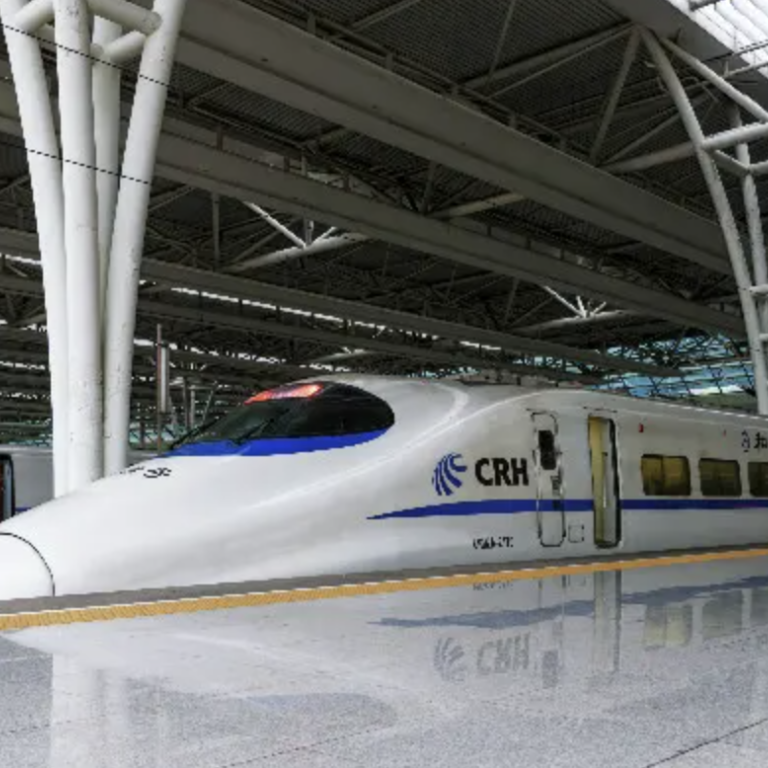
04
Guangzhou 5G Smart Railway
Railway, especially high-speed train, has become a symbol of China’s modern transportation system. Guangzhou is home to 10 high speed railway stations. With millions of train passengers per day, safety and efficiency and passenger services are of highest priorities of Guangzhou railway system.
5G early warning system. Due to the high speed of the train, which can be as fast as 100 m/s, even a tiny object on the track may lead to disaster. Thus, for safety, at least 8km in front of the moving train must be monitored with 5G enabled system. If there is any potential intrusion onto the tracks, the back-end system will be analyzed and send a warning message through 5G to the train.
5G train operation data auto backup. For train operations, there are large amount of operation data to be sent back from trains to central back-end system. But currently it relies on tedious manual copying of the data. With the 5G-enabled system, the transmission efficiency is improved by more than 10 times.
5G train suspension inspection system. With 5G, traditional manual train suspension inspection is replaced by 5G-enabled remote inspection system. What would have required two hours of manual inspection back then, takes just two minutes of camera-assisted and AI-driven inspection now.
5G smart railway marshaling station. With a dedicated 5G private network for railway marshaling and production, the integrated automated system reduces the number of front-line production staff from 215 to 150 and the average daily train processing capacity increases from 8,000 to 10,000.
Rich train passenger online services. For the high-speed train passengers, the boring long-distance traveling experience is transformed into an enjoyable one, thanks to rich online videos, audios, eBooks and online courses provided by Tencent.
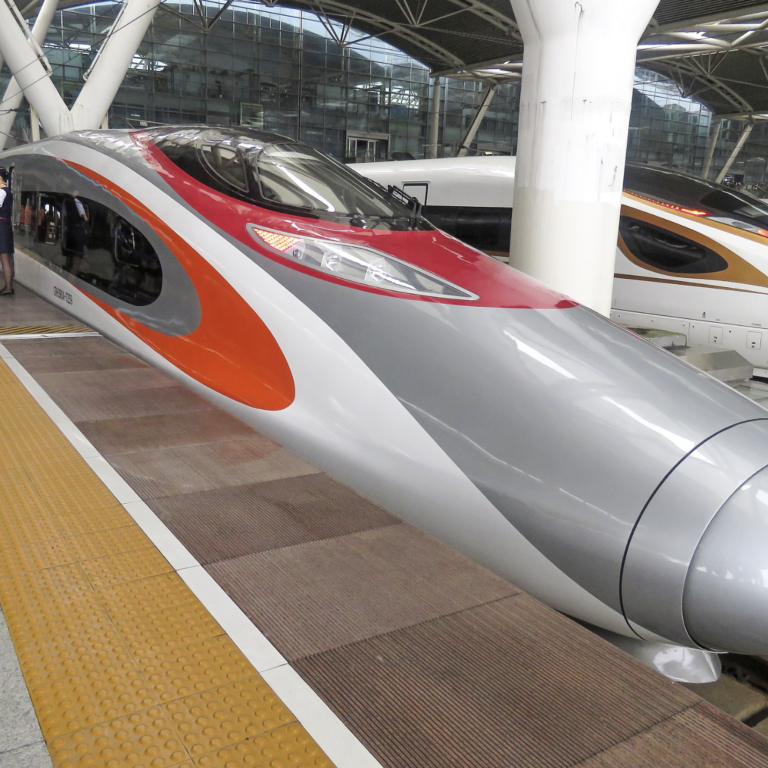
05
Guangzhou 5G Smart Bus and Road Management
Guangzhou has 1,280 bus lines and bus route length of 23,000 kilometers, serving the city’s 20 million population. The city also has a total paved road area of 191 square kilometres.
5G Smart Bus
This enables bus control center to monitor bus operations in real time and have a full view of the buses from different angles. Also, the bus drivers’ driving behavior and driving track record are captured and analyzed by the back-end system, which greatly improves the safety of bus operations. Also, with 5G intelligent bus scheduling system, the time needed to schedule bus lines is reduced from a week to a day. And the bus system capacity is increased by about 10%.
Guangzhou Travel Information Service
This mobile app integrates services from bus, metro, and railway by offering up-to-date travel planning and information services, such as when the next bus comes or how crowded a bus is. Besides travel information, passengers can use 5G-enabled high-precision positioning to search for nearby shopping and dining information to better utilize their transit time.
5G Traffic Monitoring and Road Inspection
With 5G, road administration and road safety inspection are more efficient and less resource consuming. For example, the real-time traffic monitoring system better coordinates the traffic and lessens traffic congestion that has become part and parcel of big city road transportation experience. Also, a road and bridge inspection application using drones has been developed. For example, in the case of drone-assisting bridge inspection at the Nansha Bridge spanning the Pearl River, the detection rate is increased by 65%.
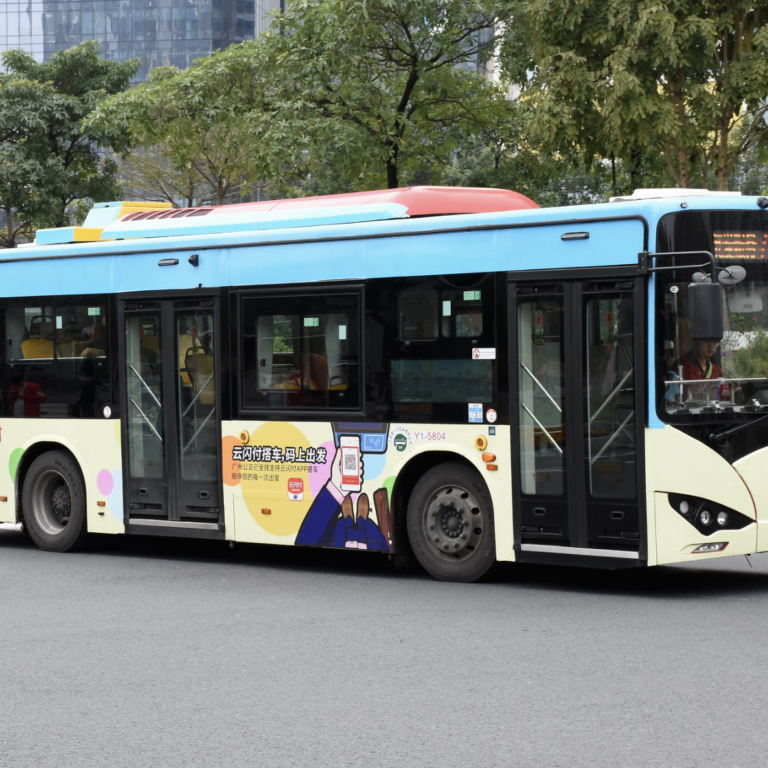
06
Results and Benefits
Guangzhou 5G Smart Transportation City has greatly modernized and transformed the city’s transportation system, from offline to online and from labor intensive and manual to remote and automatic. The quite often stressful and tiring travel experience is transformed and uplifted into a relaxed and convenient one.
Safety
Safe travel is one of the most often heard phrases. Indeed, safety is the most important aspect of transportation industry. 5G smart metro real-time tunnel and track monitoring solution helps to reduce the rate of incidence and cost of maintenance by about 20%.
With 5G early warning system, early detection rate of potential risk and accident on rail roads increased by 20%.
With 5G Traffic monitoring and road inspection solution implemented at Nansha Bridge over Pearl River, the fault detection rate is increased by 65%.
Efficiency
Efficiency is of utmost importance to the transportation system of a city, especially a city of 20 million population. 5G smart metro solution helps station control shorten the average processing time by 20% during peak hours.
5G service application reduce the number of front-line production staff from 215 to 150, 30% decrease. The average daily train processing capacity increases from 8,000 to 10,000.
With 5G smart bus solution, the time needed to schedule bus lines is reduced from a week to a day and bus capacity is increased by about 10% without additional buses.
Convenience
Passengers in Guangzhou today are embracing for an uplifted travel experience, saying goodbye to those stressful travel experience. Passengers also enjoy wireless gigabit Internet anytime and anywhere, be it station halls, platforms, or trains. Even in a fast-moving metro train, the download speed can be up to 600Mbps.
Sitting in the train is no longer boring experience, thanks to the rich online content, from videos, audios, eBooks to online courses, provided by Tencent.
Guangzhou Travel Information Service, an extremely popular service, is used by over 10 million passengers. And it goes beyond just travel information to include shopping and dining information, for an uplifted and convenient travel experience on the roads and on the busses.
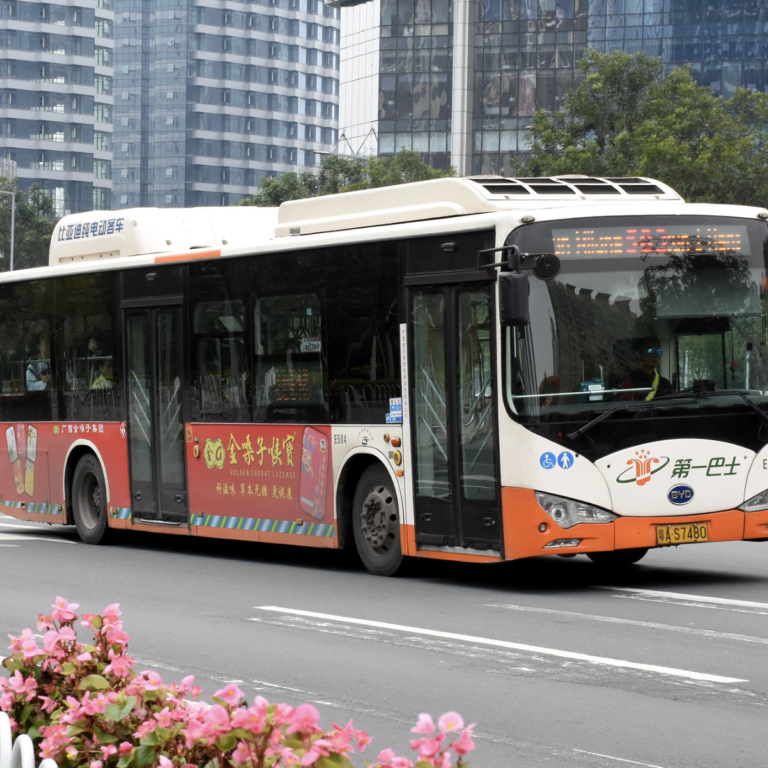
07
Future Plans
Besides catering to current transportation scenarios, the Guangzhou 5G smart transportation project also embraces future transportation system. For example, autonomous driving.
A demonstration base is established, and it fosters cutting-edge autonomous driving and Internet of Vehicles applications. The main partners include Guangzhou Automobile Group, ZTE and China Mobile. Currently the demonstration base focuses on road safety and traffic efficiency. For example, safety record for autonomous driving has been improved by 30% and the overall road traffic optimization efficiency has been improved by 20%.
The Guangzhou smart transportation partners have set up an Innovation Lab to further explore new use cases and future opportunities based on 5G innovation and capabilities. Also, other transportation industry including airport is also being planned for future inclusion into the project.
Future prospect - building on Guangzhou’s success
In China, the model of Guangzhou 5G Smart Transportation has been replicated, in full or in part, in more than 30 cities. Globally, smart transportation industry has a huge potential. It is expected that by 2024, the global market for smart transportation will reach US$ 130 billion.
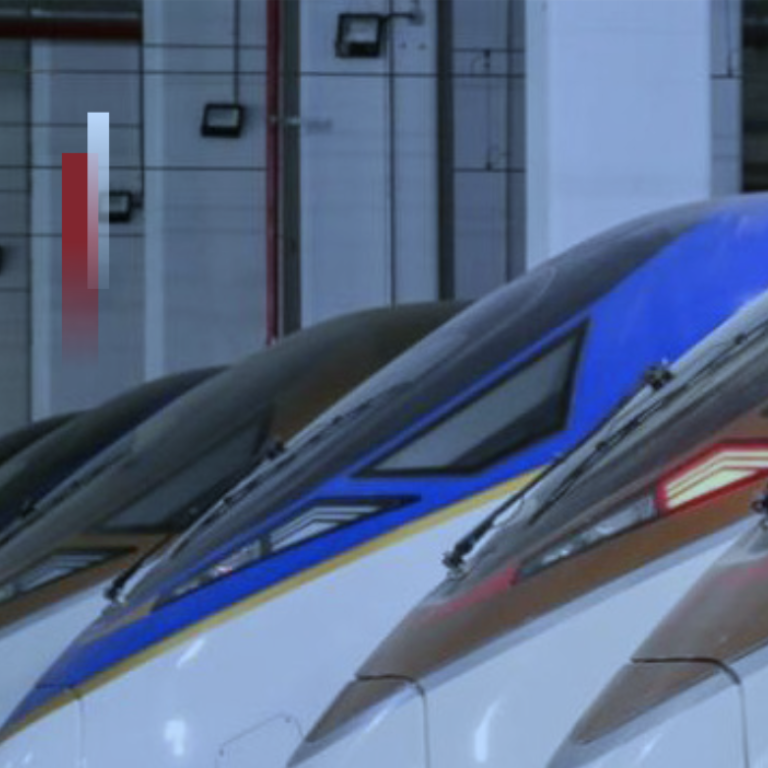
08
About
About the GSMA
The GSMA is a global organisation unifying the mobile ecosystem to discover, develop and deliver innovation foundational to positive business environments and societal change. Our vision is to unlock the full power of connectivity so that people,
industry, and society thrive. Representing mobile operators and organisations across the mobile ecosystem and adjacent industries, the GSMA delivers for its members across three broad pillars: Connectivity for Good, Industry Services and Solutions, and Outreach. This activity includes advancing policy, tackling today’s biggest societal challenges, underpinning the technology and interoperability that make mobile work, and providing the world’s largest platform to convene the mobile ecosystem at the MWC and M360 series of events.
For more information, please visit the GSMA corporate website at www.gsma.com.
Follow the GSMA on Twitter: @GSMA.
GSMA 5G Transformation Hub
The GSMA 5G Transformation Hub is a source of information on some of the most innovative 5G solutions in the world. This portal contains case studies detailing design, benefits, key players, measured value and the future impact of scaling up these 5G solutions worldwide. The 5G Era is now firmly established and this family of standardised GSM technologies, including mmWave, are being rolled out successfully across the globe. The GSMA 5G Transformation Hub, launched at MWC Barcelona in 2022, provides details of how 5G is best placed to deliver real value for a range of key sectors including manufacturing, energy, transportation, media and live entertainment, smart cities and construction.. Many more case studies will be added, in the coming months, covering even more industries and the GSMA is asking Members to nominate innovative 5G case studies to add to this global digital showcase. The 5G Transformation Hub and this particular Case Study are both sponsored by Qualcomm.
About this case study
This case study is for information only and is provided as is. The GSM Association makes no representations and gives no warranties or undertakings (express or implied) with respect to the study and does not accept any responsibility for , and hereby disclaims any liability for the accuracy or completeness or timeliness of the information contained in this document. Any use of the study is at the users own risk and the user assumes liability for any third party claims associated with such use.